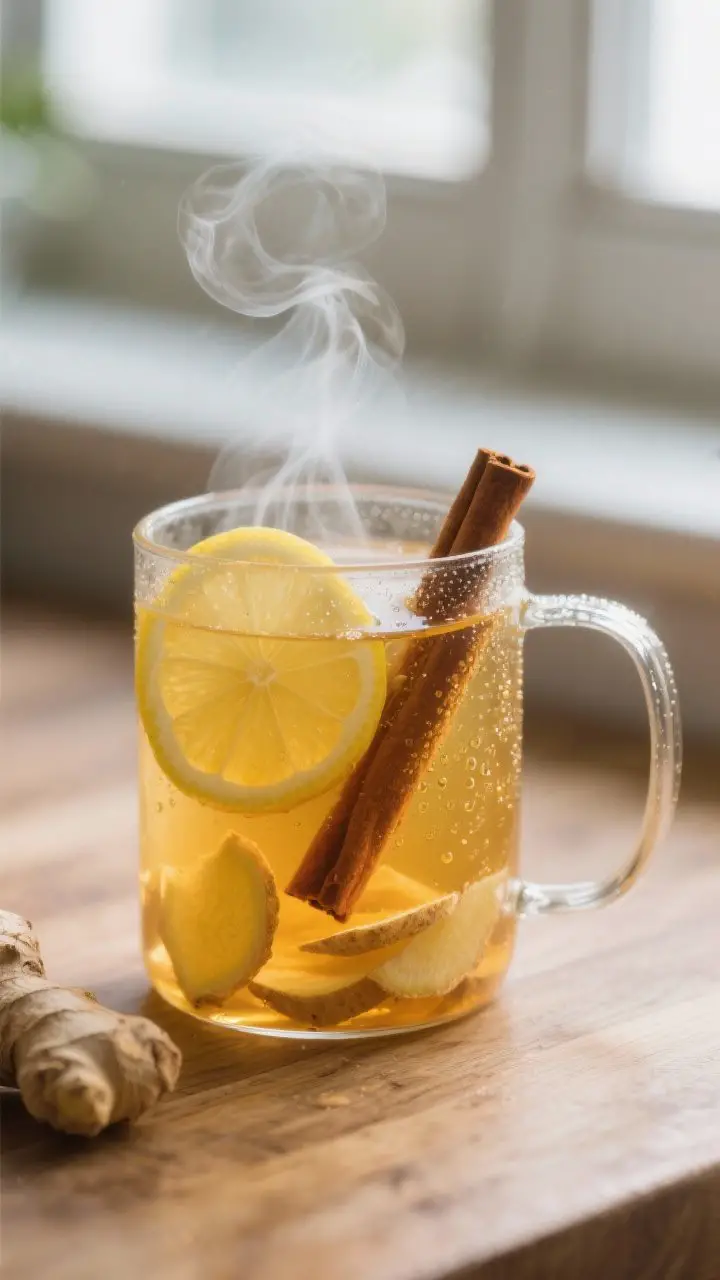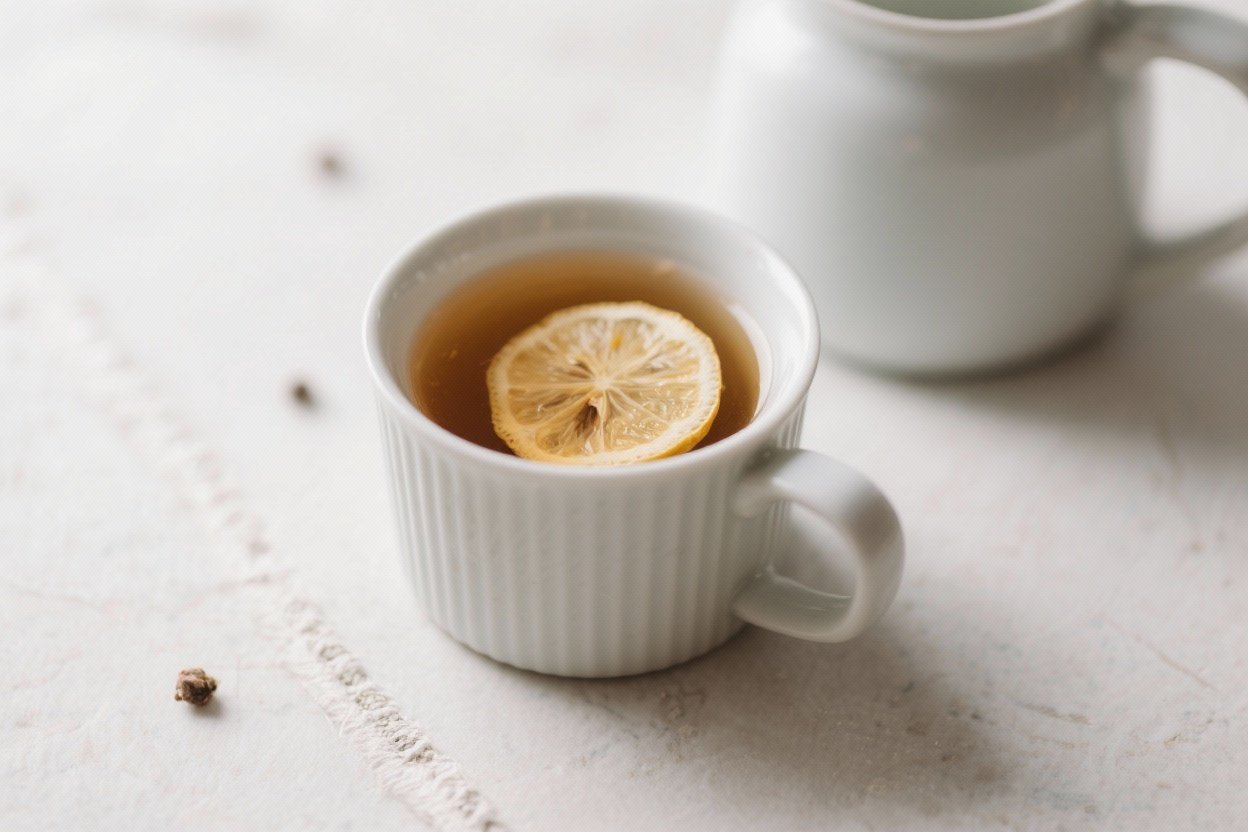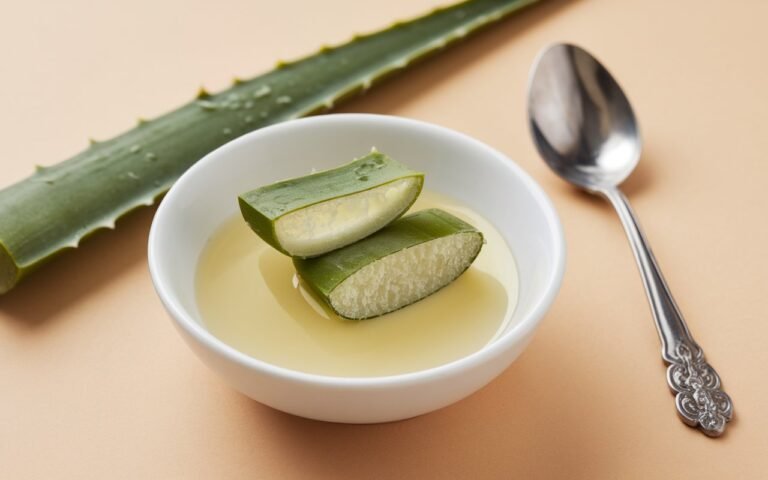Homemade Cold & Flu Tea
You wake up with a scratchy throat, a heavy head, and a general vibe of “nope.” You could power through with store-bought stuff, but your body wants something warm, soothing, and actually tasty. Enter homemade cold and flu tea—the low-effort, high-comfort ritual you can whip up in five minutes flat. It won’t cure the common cold (sadly), but it will make you feel human again.
Why Homemade Tea Beats the Boxed Stuff

Homemade tea lets you control everything—flavor, sweetness, strength, and what you put in your body.
You also skip the mystery ingredients and preservatives. Plus, when you brew it yourself, you use ingredients that actually do something instead of relying on vague “natural flavors.” Also, the ritual matters. You slow down, you inhale steam, and you sip something warm while wrapped in a blanket.
📖 Get Access to 50+ Printable Smoothie Recipes Instantly! 🖨️
Boost your health with delicious smoothies! These easy-to-follow printable recipe eBooks are perfect for detoxing, fitness goals, and tasty plant-based living. Available for instant download on Etsy! 🌿✨
Is that therapy? IMO, kind of.
The Core Formula: Comfort + Steam + Simple Herbs
You don’t need rare roots or a witch’s garden. You need a simple formula that you can tweak based on what you have. Basic Blueprint
- Base: Hot water or mild tea (chamomile or green)
- Heat + Kick: Fresh ginger
- Zing + Vitamin C: Lemon
- Coating Sweetness: Honey
- Extra Soothing: Cinnamon or turmeric
Quick Recipe (Your New Sick-Day MVP)
- 1–2 inches fresh ginger, sliced thin
- 1 cinnamon stick (or 1/2 tsp ground)
- Juice of 1/2 lemon (plus a slice to float, because aesthetics count)
- 1–2 tsp honey (more if your throat feels like sandpaper)
- 2–3 cups water
- Optional: pinch of turmeric + black pepper (for absorption), a chamomile tea bag, or a few mint leaves
- Simmer ginger and cinnamon in water for 8–10 minutes.
- Turn off heat.
Add lemon juice and honey. Stir. Taste.Adjust.
- Add optional herbs and steep for 2–3 minutes. Sip slowly and breathe in the steam.
FYI: Add honey after you remove the pot from heat. High heat can wreck its flavor and some beneficial properties.

What Each Ingredient Actually Does
Let’s keep it real and simple: none of this replaces medical care.
But the ingredients serve a purpose beyond smelling nice.
- Ginger: Warms you from the inside, helps with nausea, and brings a gentle spicy kick that clears your head.
- Lemon: Adds brightness and vitamin C, cuts through that “blanket on your tongue” feeling.
- Honey: Coats a scratchy throat and calms coughs. Also, it makes everything taste better. Do not give honey to kids under 1 year old.
- Cinnamon: Adds a cozy flavor and mild antimicrobial vibes.
Plus, it makes your kitchen smell like you have your life together.
- Turmeric + black pepper: Potential anti-inflammatory duo. The pepper boosts curcumin absorption—science for the win.
- Chamomile: Relaxing, gentle, and sleepy-time friendly.
- Mint: Opens up the sinuses and freshens your breath because, um, you’re sick.
Substitutions That Still Work
- No fresh ginger? Use 1/2–1 tsp ground ginger.
- No lemon?
Try orange or a splash of apple cider vinegar (1–2 tsp).
- No honey? Maple syrup or agave works. For a sugar-free vibe, skip sweetener and rely on cinnamon.
- Gluten-free/dairy-free?
Good news: this tea already does that. Just don’t dunk your buttered toast in it (tempting though).
Flavor Combos Based on Your Symptoms
Pick your mood—or your misery—and brew accordingly.
For a Sore Throat
- Ginger + honey + lemon + chamomile
- Keep it hot but not scalding. You want soothing, not “ow, my esophagus.”
For Congestion
- Ginger + mint + lemon + cinnamon
- Lean over the mug and inhale the steam.
It’s a mini facial for your sinuses.
For Nausea
- Ginger + a small squeeze of lemon + honey
- Skip strong spices and sip slowly. Tiny sips > one big chug.
For Sleep
- Chamomile + honey + lemon + a pinch of cinnamon
- Avoid green tea or anything caffeinated after afternoon hours, unless you enjoy staring at ceilings.

Batch It Like a Pro
When you feel crummy, you don’t want to babysit a pot every two hours. Make a larger batch and reheat gently. How to Batch
- Simmer 8–10 cups water with 3–4 inches sliced ginger and 2 cinnamon sticks for 10 minutes.
- Turn off heat.
Add juice of 2 lemons. Sweeten by the cup, not the pot, to avoid overdoing it.
- Store in the fridge for up to 3 days. Reheat on the stove or in a mug in the microwave (no shame).
Pro Tips
- Strain it well if you used ground spices, or you’ll get a gritty last sip.
Not fun.
- Keep lemon separate if you want to avoid bitterness from long simmering.
- Add fresh herbs like mint or thyme at the end to keep flavors bright.
Boosters You Can Add (If You’re Feeling Fancy)
Feeling adventurous? Add a little something extra.
- Clove: Good for mouth and throat comfort. Use sparingly—cloves go from “cozy” to “dentist” fast.
- Star anise: Licorice-adjacent flavor, lovely for depth.
- Cardamom: Floral, warming, and excellent with ginger and honey.
- Thyme: Herbaceous and supportive for coughs; steep for 3–5 minutes.
- Elderberry syrup: A spoonful added to your cup for fruity sweetness and a bit of immune support.
When You Should See a Doctor Instead
Tea helps comfort, not cure.
If your symptoms last more than a week, you have a high fever, chest pain, trouble breathing, or symptoms worsen suddenly, talk to a healthcare pro. Also check in if you’re pregnant, have chronic conditions, or take meds that could interact with herbs (looking at you, turmeric and blood thinners). Safety first, kitchen witchery second.
FAQ
Can I drink this tea all day?
Yes—within reason.
Aim for 2–5 cups, sip steadily, and drink plain water too. If you used lots of lemon, consider a water rinse after to protect tooth enamel.
Is it safe for kids?
Generally, yes for older kids, but never give honey to children under 1 year old. For toddlers, go lighter on ginger and lemon.
When in doubt, ask their pediatrician.
Can I use tea bags instead of fresh ingredients?
Absolutely. A ginger tea bag plus chamomile or mint works fine. Add fresh lemon and honey to level it up.
Fresh ginger tastes brighter, but we use what we have—no judgment.
What if I hate ginger?
Swap in more cinnamon, a few slices of fresh turmeric, and mint. You’ll lose the spicy kick, but you’ll keep the soothing warmth. IMO, a little ginger grows on you—like an acquired superpower.
Does this help with the flu or just a cold?
It helps with both in the comfort department—think throat relief, hydration, and steam for congestion.
It won’t replace antiviral medication if you need it. If you suspect flu and feel really rough, call your doctor early.
Can I make it iced?
Yep. Brew it strong, chill it, and pour over ice with lemon and honey.
You’ll still get the benefits, just without the cozy steam. Great for fever days when hot drinks feel like a bad idea.
Conclusion
Sick days already feel crummy—your tea shouldn’t. Keep the ingredients simple, play with the flavors, and brew what your body asks for.
A warm mug won’t cure your cold, but it will soften the edges, calm your throat, and make you feel cared for. And that, FYI, is half the battle.







